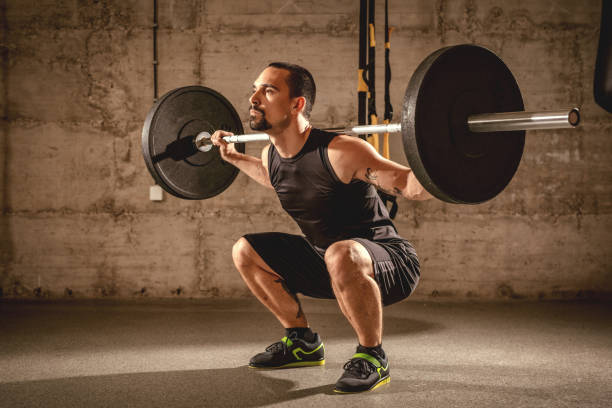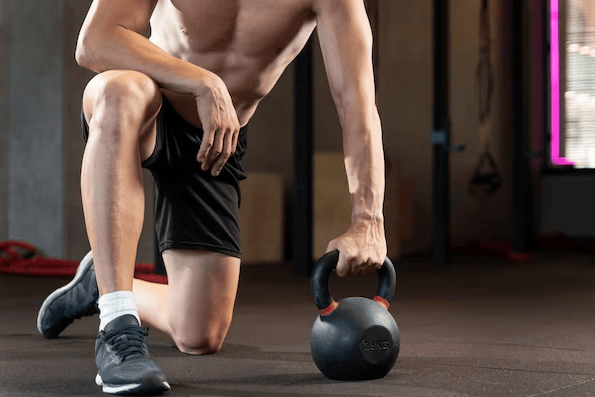Table of Content
5 Leg Workouts At The GYM | Science Backed Leg Workouts!
If you’re aiming for bigger, stronger legs, having a balanced routine is essential. The key to building muscle in your legs is targeting all the major muscle groups—quads, glutes, hamstrings, and calves. These five leg exercises are not only effective but also supported by scientific research, ensuring you’re on the right track to reaching your fitness goals.
1. Barbell Squats

Barbell squats are often called the “king” of all leg exercises—and for good reason. Squats are one of the most efficient exercises for overall leg development. A study published in 2020 by the International Journal of Sports Medicine found that after 12 weeks of doing back squats, participants experienced a 12% increase in quad size and a 9% increase in glute size.
Back Squats vs. Front Squats
Both types of squats engage similar muscle groups, but they do so in slightly different ways. Back squats generally focus on overall leg and glute strength, while front squats place more emphasis on your quads. Front squats are also a great option if you’re concerned about putting too much stress on your knees or lower back. To ensure complete leg development, alternate between back and front squats in your routine.
How to Perform: Lower your body until your thighs are parallel to the ground, and use a moderate weight. Aim for 6–10 reps per set.
2. Barbell Hip Thrusts
Barbell hip thrusts are among the best exercises for building strong, toned glutes. Some studies show that hip thrusts engage the glutes and the muscles along your posterior chain (hamstrings and lower back) more effectively than squats do. However, other research indicates that over time, squats might offer more glute growth.
Although squats are excellent for long-term gains, hip thrusts let you lift heavier weights without straining your joints. They also create a great muscle contraction, especially at the top of the movement. To get the most out of hip thrusts, focus on keeping your lower back neutral and tilting your pelvis slightly as you lift.
How to Perform: Go for 12–15 reps with moderate to heavy weights.
3. Split Squats
Split squats are a fantastic exercise for isolating and strengthening one leg at a time, which is crucial for correcting any muscle imbalances. This exercise works your quads, glutes, and hamstrings while also improving balance and coordination.
If you’re a beginner, split squats are often easier to learn than lunges. Once you’re comfortable, you can progress to Bulgarian split squats, where the back leg is elevated to add intensity. You can make the exercise even harder by trying the contralateral Bulgarian split squat, which focuses more on the glute medius.
How to Perform: Do 8–12 reps on each leg with moderate weights, concentrating on keeping your form steady.
4. Glute Ham Raises
Also known as Nordic curls, glute ham raises are one of the most effective exercises for targeting the hamstrings. Research shows that they engage the hamstrings more than many other common leg exercises, which makes them excellent for building muscle and increasing strength.
Another benefit of glute ham raises is their ability to improve eccentric strength. This type of strength is crucial for athletes or anyone participating in sports that involve running or quick changes in direction, as it helps reduce the risk of injury.
How to Perform: Keep your body straight as you lower yourself to the ground slowly. If you’re just starting out, you can use assistance like a Bosu ball or focus on just lowering your body until you’re strong enough to do the full exercise. Aim for 10–15 reps, gradually adding weight as you get stronger.
5. Calf Raises
No leg workout is complete without addressing the calves. To build fully developed legs, it’s important to hit all the major muscle groups, including your calves. You can do both standing and seated calf raises to target different parts of the calf muscles. Standing calf raises work the gastrocnemius, the larger, more visible part of the calf, while seated calf raises target the deeper soleus muscle.
How to Perform: Aim for 3–4 sets of standing calf raises followed by seated calf raises, with 12–20 reps per set. Mix up your rep ranges by doing both high and low reps to engage different muscle fibers.
How to Structure Your Leg Workouts
To get the best results from your leg workouts, it’s important to strike a balance between hip-dominant and knee-dominant exercises. For example, squats are knee-dominant exercises that primarily focus on the quads, while deadlifts are hip-dominant and target the glutes and hamstrings.
Here’s a sample structure for a leg workout day:
- Warm-up: Light cardio (5–10 minutes) and dynamic stretches
Main Workout:
- Perform barbell squats: 3–4 sets of 6–10 reps
- Do barbell hip thrusts: 3 sets of 12–15 reps
- Complete split squats: 3 sets of 8–12 reps per leg
- Include glute ham raises: 3 sets of 10–15 reps
- Perform standing calf raises: 3–4 sets of 12–20 reps
- Finish with seated calf raises: 3 sets of 12–20 reps
You can do this workout once a week or add in a second leg day with variations of these exercises to ensure all muscle groups are fully engaged. This will help avoid overtraining any single group while ensuring balanced muscle growth.
Final Thoughts on Building Stronger Legs
For optimal leg growth, it’s crucial to target all the key muscles and include a mix of bilateral and unilateral exercises. By doing so, you’ll not only build stronger, more defined legs but also avoid muscle imbalances and injuries. Incorporating exercises like barbell squats, hip thrusts, split squats, glute ham raises, and calf raises into your routine ensures you’re following a well-rounded plan for success.
Stick with this science-based leg workout plan, and you’ll be on your way to bigger, stronger, and more powerful legs. Just remember to be consistent, push yourself, and pay attention to form to avoid injury and maximize your results. If you’re looking to build up your arms as well, check out our guide to effective forearm workouts.
For beginners, it’s recommended to seek the help of a professional trainer to ensure proper form and safety.
FAQs on leg workouts at the gym
1. What’s the best way to start a leg workout for beginners?
Answer: Start with basic moves that build strength and stability, like squats, lunges, and leg presses. Focus on good form over heavy weights—it’s all about getting comfortable with the movements. Don’t worry if it feels tough at first! Take it slow, and as you get stronger, you can add more weight and variety.
2. How many times a week should I train my legs?
Answer: For most people, 1-2 times a week is perfect. If you’re new, once a week lets your muscles recover fully. As you build strength, you might want to go twice a week. Remember, recovery is just as important as the workout itself, so make sure to give your legs a break between sessions.
3. Why do I feel sore for days after a leg workout?
Answer: That soreness is called DOMS (Delayed Onset Muscle Soreness) and happens when you push your muscles in new ways. It’s totally normal and shows your muscles are working and growing! To help with recovery, stay hydrated, stretch, and even try light movements to get the blood flowing. Don’t worry—it gets easier with time!

Leave a Reply